Flooring is one of the most important parts of any room, and it’s especially important to have clean floors after construction. During a remodel, dust and debris can accumulate on your floors, ruining their appearance and potentially leading to health risks. Cleaning up after a renovation or construction project can be daunting, but there are steps you can take to ensure that your floors are safe and clean.

Cleaning floors after construction has many advantages. Not only does it make your home cleaner and more aesthetically pleasing, but it can also reduce the risks of dust-borne illnesses such as asthma or allergies. It can also help protect your flooring from damage due to excessive dirt buildup. In this blog post, You will learn in detail how to clean floors after construction.
Materials You Will Need
- Broom
- Vacuum cleaner
- Mop
- Rags or microfiber cloths
- Cleaning solution (get a general all purpose cleaner)
- Sponge
- Scrub brush
- Rubber gloves
- Safety goggles
- Dustpan
Step by Step Processes for How to Clean Floors After Construction:
Step 1: Prepare the Room
Move any furniture, fixtures, and other items out of the room to clean it more effectively. This can be done by putting them in a different room or storing them away until you are finished cleaning.
Step 2: Sweep the Floor
Use a broom to sweep up dust, debris and dirt from the floor. Make sure that all corners and hard-to-reach areas are thoroughly cleaned. Use a wet/dry vacuum to pick up dust, dirt and other particles from the floor. Make sure to get into all the crevices and corners for deeper cleaning.
Step 3: Clean with Soap & Water
Mix a mild cleaner with warm water and use it to mop the floor. Be sure to clean all the baseboards, corners, and crevices as well. Allow the soap and water mixture to sit for a few minutes before rinsing with clean water.
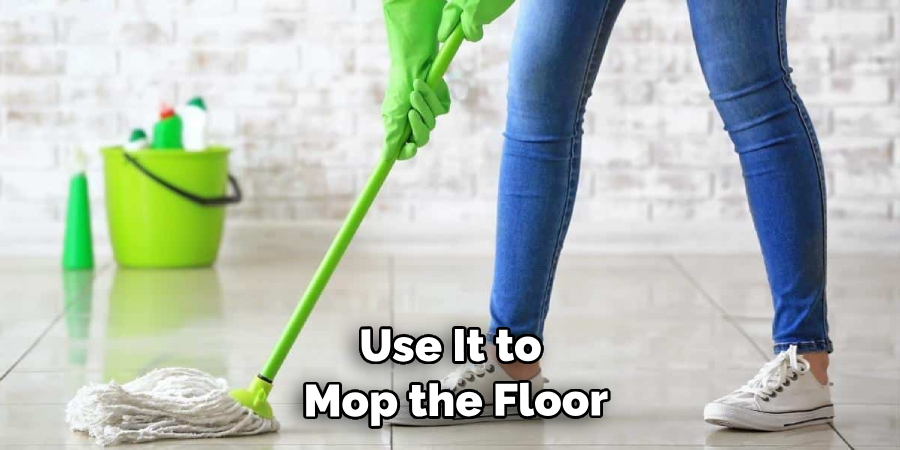
Step 4: Rinse the Floor
Rinse the floor thoroughly with clean water to remove any residue from the soap mixture. Change out the cleaning solution frequently or whenever it becomes too dirty for effective cleaning. Using a soft cloth, dry off any remaining moisture on the floor until it is completely dry. Make sure all corners and crevices are dried properly to avoid mold growth or discoloration.
Step 5: Remove Stains and Marks
If there are any marks or stains on the floor, use a mild cleaner to remove them. Be sure to read the instructions for cleaning with the specific product you are using. If the flooring is made of tile or vinyl, apply wax in a thin, even coat. Be sure to use soft cloths and buff the wax until it shines.
Step 6: Buff & Polish
If you are using hardwood flooring, buff the surface with a soft cloth to remove any excess dirt or debris. Then, use a high-quality wood polish to make it shine. For tile floors, use a grout cleaner to remove dirt and debris from the grout lines. Use a brush or toothbrush to help get into tight areas for deeper cleaning. Allow the cleaner to sit on the floor for several minutes before rinsing with clean water. Finally, dry off any remaining moisture with a soft cloth. This will help keep the grout lines looking clean and prevent mold growth.
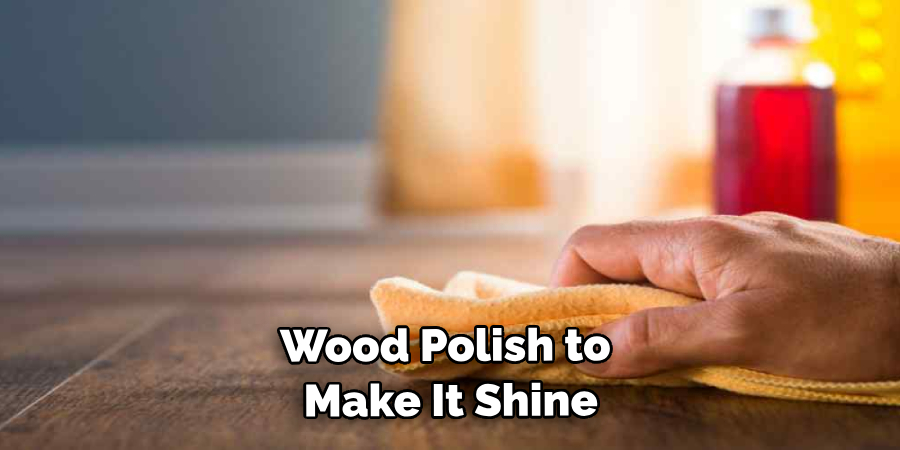
To help maintain a cleaner floor, use mats or rugs in high traffic areas such as doorways and hallways. Placing mats on either side of doorways can drastically reduce the amount of dirt tracked onto your floors.
Tips for How to Clean Floors After Construction
- Wear protective gear while cleaning floors after construction. This includes safety glasses, gloves, and a dust mask to protect your eyes, hands, and lungs from the debris that may be present in the air.
- Vacuum up as much of the dust and debris as possible before you begin using other cleaning products. While vacuuming will not get rid of all of the dirt and dust, it will help to reduce the amount of particles in the air.
- When using a mop or other cleaning product, make sure that it is specifically designed for use on floors after construction. Other everyday products may contain toxic chemicals that could be hazardous to your health if inhaled during cleaning.
- Don’t forget to clean walls, baseboards, and other surfaces as needed. Dust and debris can accumulate on these areas just like floors, so it is important to clean them all to ensure that your post-construction area is thoroughly cleaned.
- If you are using harsh chemicals or strong cleaners for the job, make sure that the area is well ventilated. Keeping windows open or running a fan can help to reduce the presence of dangerous fumes in the area.
- Once your floor is clean, you will want to seal or polish it to protect against future dust and debris buildup. This should be done after all other cleaning tasks have been completed. Be sure to read and follow the instructions on any products that you use for this job carefully.
Additionally, consider hiring a professional to come in and do a deep clean of the area after construction is complete. This will ensure that all debris has been removed and your floors are looking their best.
Professional cleaners also have access to more powerful equipment and cleaning products, so they can get the job done quickly and efficiently.
How Often Should You Be Cleaning Your Newly Constructed Floors?
After construction, you should be cleaning your newly constructed floors on a regular basis. This will help protect the surface of the floor and keep it looking great for years to come. Depending on how often you use your newly constructed floors, you should plan to clean them at least once a month using appropriate cleaning products.

If there are any areas with heavy foot traffic, you should clean them more frequently to protect the surface from wear and tear. Consider special cleaning products designed for the type of flooring you have installed in your home.
These can be found at most hardware or home improvement stores and will help ensure that your floors stay looking great for years to come. If there are any spills on the newly constructed floors, you should clean them up as soon as possible. Using the right cleaning products can help prevent staining or damage to your floors.
What Techniques Can You Use to Make Sure the Floor is Clean to Left Behind During the Construction Process?
There are a few techniques you can use to make sure the floor is clean and free of dust, debris, and other residue left behind during the construction process. The first step is to vacuum or sweep the area thoroughly using a vacuum with a HEPA filter. This will help remove any surface dirt or debris that could be tracked around when mopping.
The next step is to mop the area using a mixture of warm water and an appropriate cleaner. This will help remove any grime, dust, or residue that may have been left behind on the floor during construction. Be sure to use a damp mop rather than a wet one so that you don’t spread around extra moisture and cause more damage.
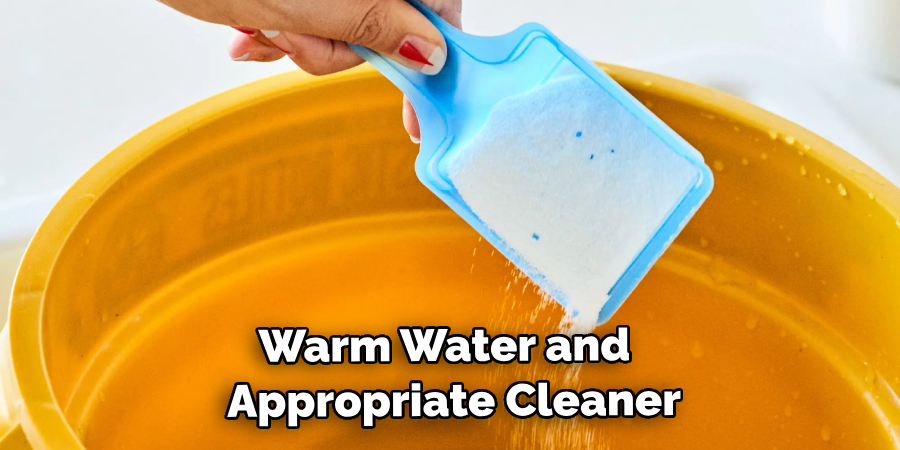
Finally, allow the floor to dry thoroughly before adding any furniture or rugs back into the space. This will help ensure that any remaining dust or debris is not trapped and embedded in the fabric of furniture or carpets.
Are There Any Cleaning Solutions or Products That Could Damage the Floor if Used Improperly?
Yes, there are certain cleaning solutions or products that could potentially damage floors if used improperly. It is important to read the labels and instructions of any product before use to ensure it will not cause any harm. When in doubt, always contact a professional for advice on how best to clean your newly installed flooring.
It is also important not to use too much water when cleaning a newly installed floor. While some floors may be sealed to resist water damage, too much moisture can still cause warping or staining of the surface. For this reason, it is best to use a damp rag or mop when cleaning up spills and dirt. Additionally, any cleaners should be sprayed onto the cloth rather than directly on the floor.
Finally, when using any type of cleaner or chemical on your floor, it is important to ensure proper ventilation. Vapors from certain cleaners can cause irritation and breathing problems if inhaled in concentrated amounts. As such, open windows and use fans when working with these products to reduce the risk of exposure.
How Should You Go About Deep Cleaning Your Post-construction Floors?
To perform a deep clean of your newly installed floors, it is best to start by vacuuming the space. This will help remove any dust and debris from the surface. Next, you can use a damp cloth or mop to gently wipe down the floor in sections, starting at one end and working your way to the other. When cleaning hardwood or laminate floors, use a special cleaner that is designed specifically for the material. For stone and tile floors, you can use a mild cleaning solution and a damp mop to achieve the desired results.
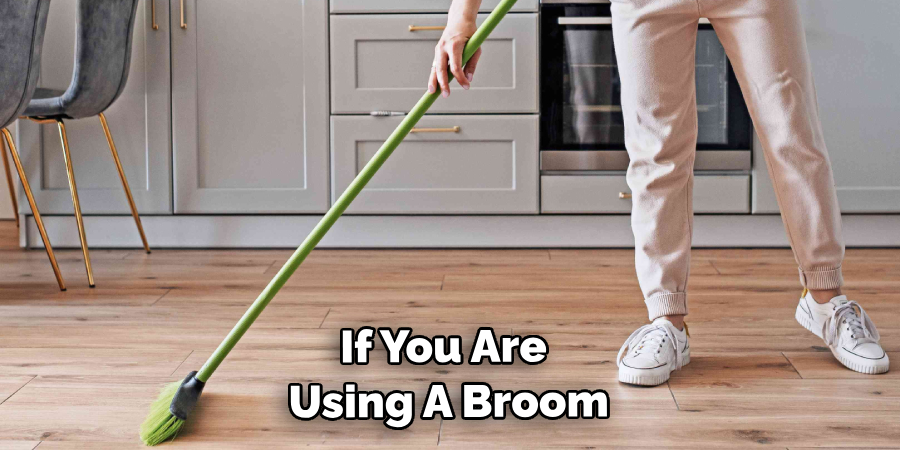
It is also important to take extra care when scrubbing areas around edges and corners. This is especially true if you are using a brush or broom as these can scratch the surface of certain flooring materials. If needed, you can use a soft-bristled brush to clean these areas carefully. Finally, make sure to dry the floors completely after cleaning. Leaving any moisture on your post-construction floors can lead to warping and staining over time. Use towels or a vacuum cleaner with a water pick up attachment to remove any residual moisture.
How Can You Ensure the Floor is Returned to Its Original Condition?
Once the construction debris and dust has been removed, the next step is to assess the condition of your floor. Look for any damage that may have been caused by heavy tools or materials being dragged over it during construction. If there are any scratches or scuffs, use a high-quality wood putty to fill them in and then sand them down. It is also important to make sure that the flooring has been restored to its original shine. If it looks dull, use a good quality cleaner and polish to bring out the natural luster. This will also help prevent future scratches or scuffs.
Finally, ensure any sealants used in construction are still intact on your flooring. Repair any gaps or cracks as soon as possible to prevent moisture from seeping into the surface and damaging it further. Once you have completed these steps, your floor should look like new again! Regular maintenance and cleaning can help keep your floors looking beautiful for years to come. Make sure you also use doormats at all entrances to protect the flooring from dirt and debris tracked in by visitors or pets.
How Do You Prevent Future Damage During Construction?
If you are planning to undertake construction work that could cause damage to your flooring, it is essential to protect it beforehand. This will help ensure that the cleaning process afterwards is simpler and faster. First, make sure to use padded mats or other protective coverings for any heavy items that need to be moved over the floor. This will help prevent scratches and other damage caused by dragging them.
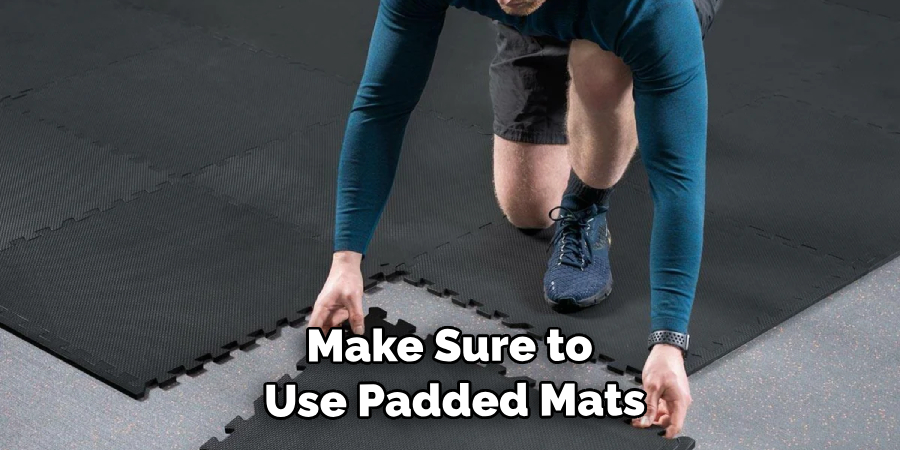
You should also take steps to stop dust from getting into your floor. Use a high-quality vacuum cleaner with a HEPA filter to suck up any dust that is present, and seal off any air vents to stop dust particles from getting inside. Finally, make sure to keep your floors clean during construction. Don’t allow dirt and debris to build up as it can be more difficult to remove once the work has been completed. Regularly sweep or mop the floor to keep it free of dust and debris. Taking these steps can help to protect your flooring from future damage and make the cleaning process easier after construction is finished.
Conclusion
The main disadvantage of cleaning floors after construction is the amount of time it can take. Depending on the size of the space, it may be necessary to spend many hours and multiple days in order to thoroughly clean every inch of the floor. Additionally, if you don’t have the proper equipment or expertise, it could be difficult to effectively clean all dirt and debris that may be present, which could lead to an unclean floor.
In conclusion, cleaning floors after construction is an important step that should not be skipped. After any major work has been done, it is essential to first mop the floor and vacuum away dust and debris. If needed, use a degreaser to remove any grease or oil left behind from tools used during the process of construction. Finally, use a damp cloth to wipe down the surface of the floor to remove any dirt or grime left behind. I hope this article has been beneficial for learning how to clean floors after construction. Make Sure the precautionary measures are followed chronologically.
